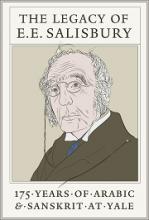Exhibits in the Memorabilia Room are closed on weekends. Operating hours for Sterling Memorial Library can be found at: http://web.library.yale.edu/building/sterling-library
In 1841 the Yale Corporation appointed alumnus Edward Elbridge Salisbury (class of 1832) as professor of Arabic and Sanskrit languages and literature, the first such position in the Americas. This exhibit marks the 175th anniversary of his appointment and explores his scholarly development, his career at Yale and after, his benefactions (including two endowed chairs), and the growth of Yale collections of Islamic manuscripts after Salisbury’s death in 1901. A discerning collector, Salisbury built up his library of Arabic and Sanskrit materials from auctions of the libraries of prominent European Orientalists and through personal contacts with American missionaries in Middle Eastern countries. He donated this “Oriental library”—one hundred manuscripts and hundreds of rare early printed European books in Arabic, Persian, and Sanskrit—to Yale in 1870, making it the largest American library for the study of these languages in its day.
In succeeding decades Yale librarians have continued to build the manuscript and printed book collection related to these areas of study, with the purchase of the Hartford Seminary’s Arabic manuscript collection in 2005 making Yale’s the third-largest collection of Islamic manuscripts in the United States. Salisbury was among the earliest members of the American Oriental Society (founded 1842), and energetically supported both the organization and its journal. His most famous student, William Dwight Whitney, became a prominent linguist and would succeed Salisbury as professor of Sanskrit. After resigning his professorship in 1856, Salisbury continued to contribute to Yale through his involvement in both the Library Committee and the advisory board of the School of Fine Art. Materials on view come principally from Yale libraries (Manuscripts and Archives, the Beinecke Rare Books and Manuscripts Library, and the general collections). Additional items come from the Yale University Art Gallery and the Near East School of Theology (Beirut). Many objects are on display for the first time.

